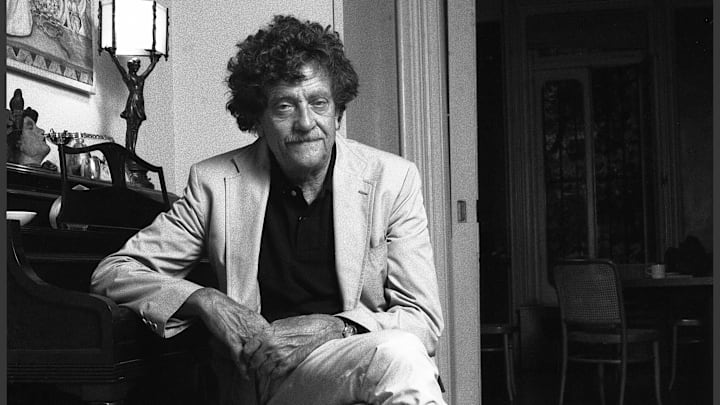In the four-minute video clip below, Slaughterhouse-Five author Kurt Vonnegut shows us his “story shapes”—simple graphs of plots along two axes. The labels for the Y axis run from G (Good Fortune) to I (Ill Fortune). Sample quote regarding one of the most popular plot diagrams: “The whole thing, we call this story ‘Man in Hole,’ but it needn’t be about a man, and it needn’t be about somebody getting into a hole. ... People love this story!”
Recommended for nerds, lovers of fiction, and used car salesmen.
The shape stories take was the subject of Vonnegut’s master’s thesis—which was rejected, Vonnegut wrote in Palm Sunday, “because it was so simple and looked like too much fun. One must not be too playful.” In his opinion, the thesis was his “prettiest contribution to the culture.”
Vonnegut was never short of advice to give to aspiring writers. Take, for example, his rules for writing a short story, which included things like “Every character should want something, even if it is only a glass of water” (Rule 3), “Start as close to the end as possible” (Rule 5), and “Write to please just one person. If you open a window and make love to the world, so to speak, your story will get pneumonia” (Rule 7).
A version of this story ran in 2011; it has been updated for 2022.
